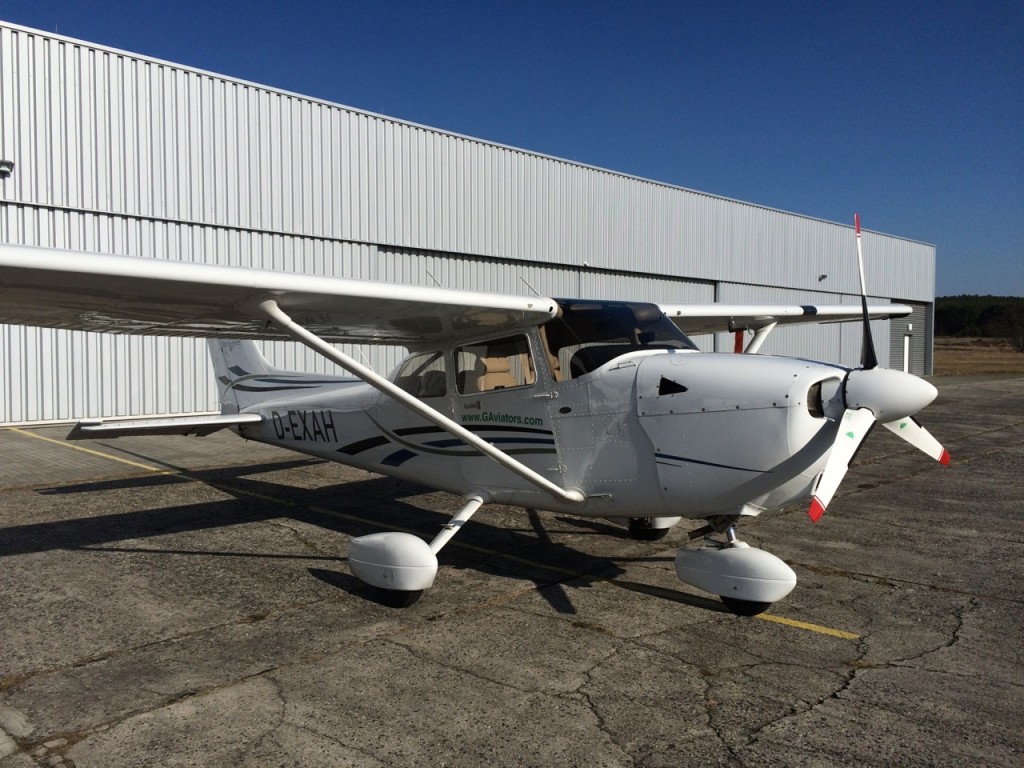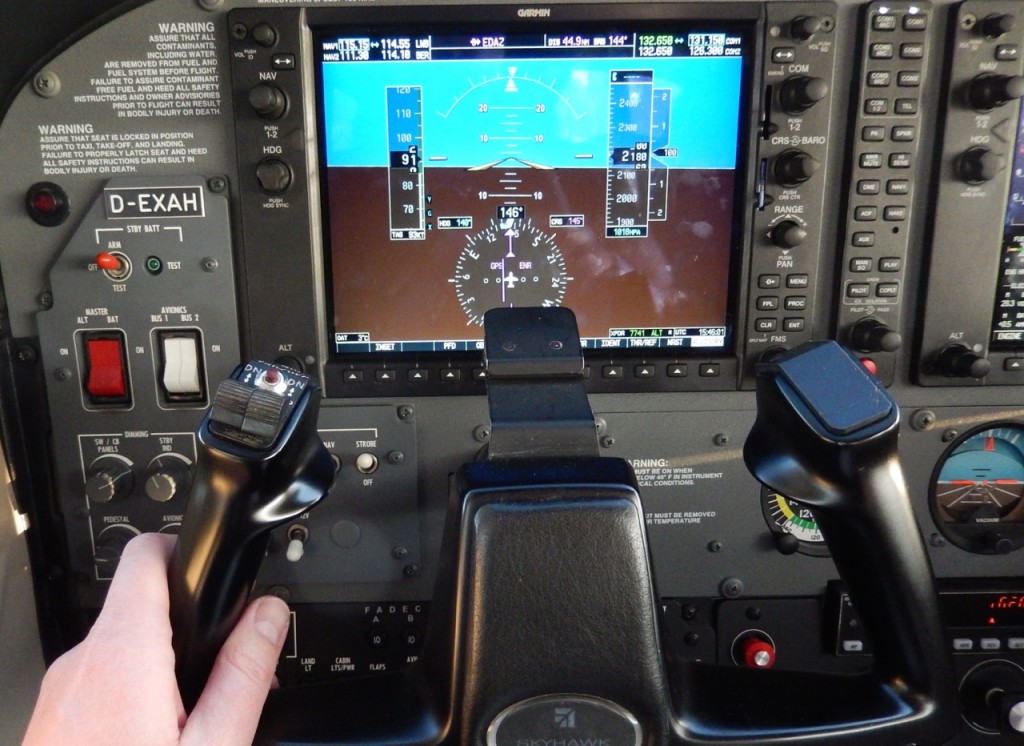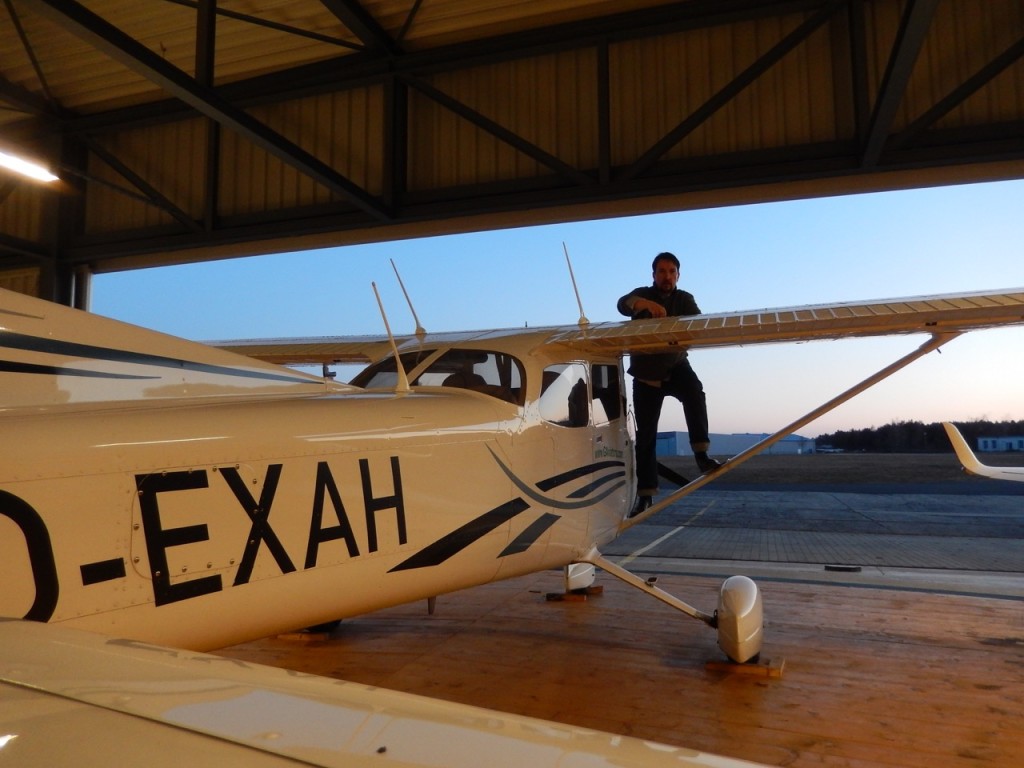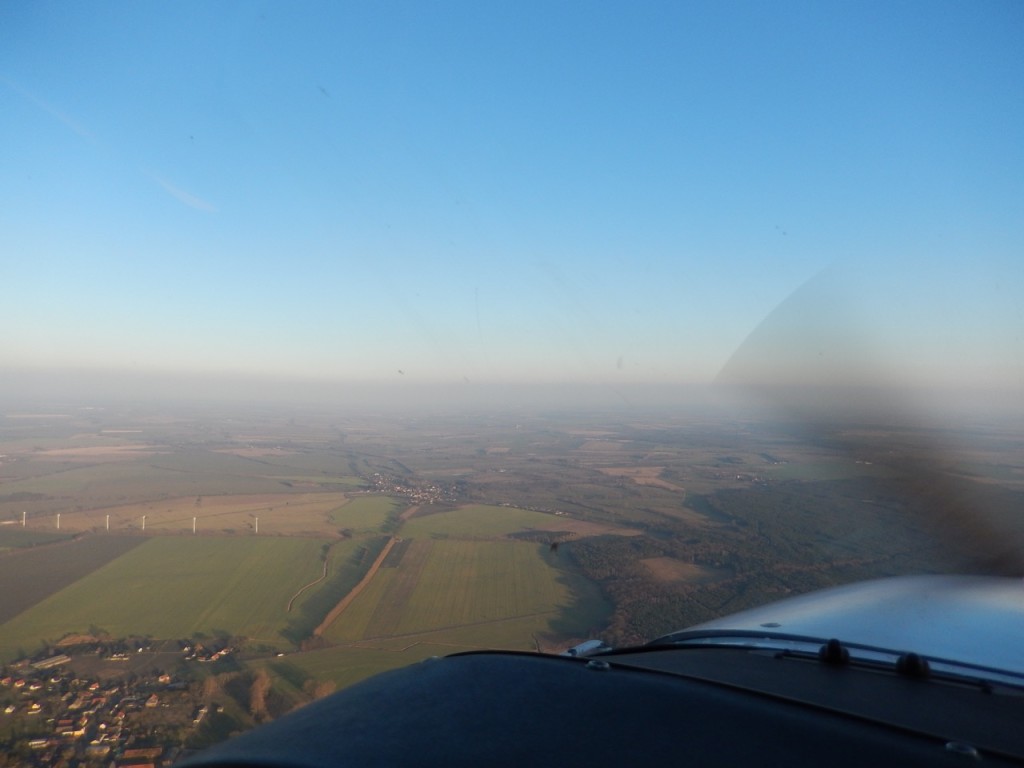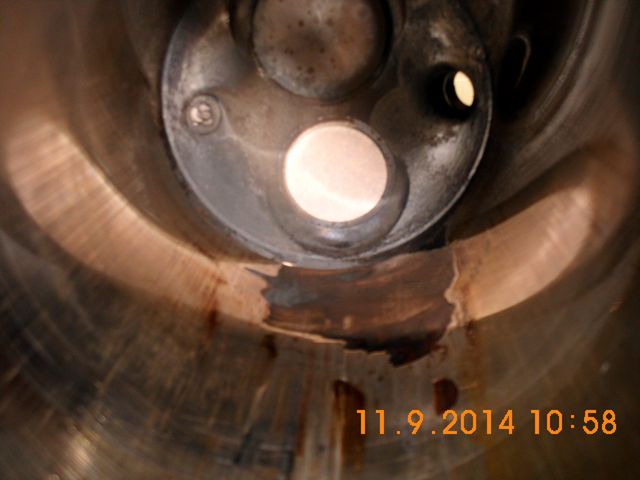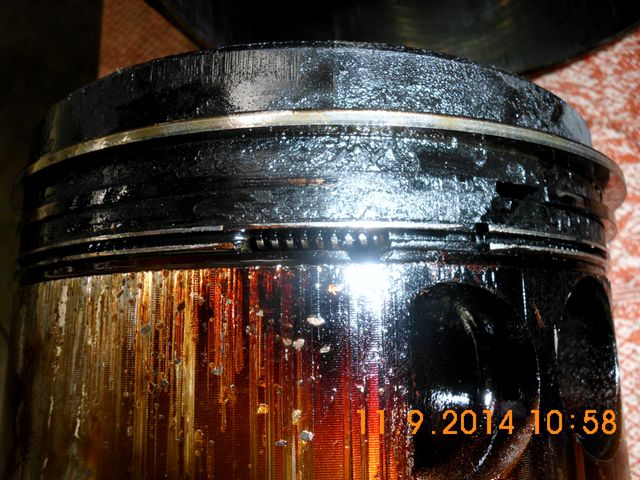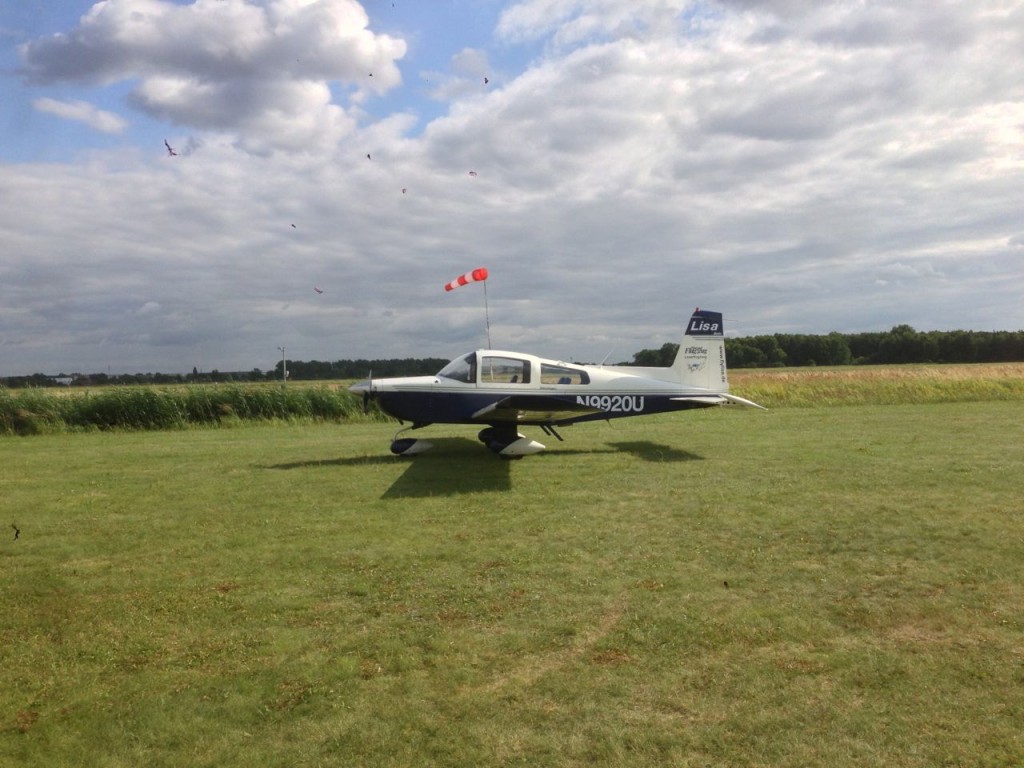Airplane of the future
Visibility: unlimited
Temperature: -1°C
Wind: 290°, 4kts
QNH: 1022hPa
Location: EDAZ
Equipment: Cessna 172 (D-EXAH)
The Cessna 172 is the Chevy of the skies. Affordable, reliable, easy to service and ist does not turn heads. In fact, I used to think they are a bit ugly. But beauty lies in the eyes of the beholder and I have changed my mind when I learned to fly the 172. I have actually grown very fond of her sturdy reliability and easy handling.
Today I am flying the future of the 172. „Alpha Hotel“ has a Garmin G1000 glass cockpit as well as a diesel engine.
Integrated
The G1000 avionics suit is the gold standard of glass cockpits in general aviation. The system typically is configured with a „Primary Flight Display“ (PFD) and a „Multi Function Display“ (MFD) – both large flat panel displays which dominate the cockpit.
The PFD is a large attitude indicator (artificial horizon). Some versions even come with a computer generated image of the terrain – very valuable in low visibility. Course, altitude and airspeed are displayed on a layer over the horizon. The information is easily accessible and comprehendible.
The MFD can be used to show engine information and is used as a giant navigation display.
The difference between traditional instrumentation and a „glass cockpit“ is enhanced situational awareness (no chance to miss that big horizon) as well as system integration. All relevant information is in one spot.
Diesel-Jet
The piston engines of small aircraft are very reliable and light but also very old fashioned. Because of the very small numbers, technical development is slow and because of the emphasis on reliability, the adaptation of new and unproved technology is slow.
The power plant working in „Alpha Hotel“ is a major innovation. An electronically controlled diesel engine by the Thielert company. It has 135 horse powers and and adjustable pitch propeller. It runs smooth and quiet and it has great fuel economy. On top of that, the Thielert diesel engine burns jet fuel – Jet-A happens to be very close to diesel fuel. And Jet-A is much more common and way cheaper than Avgas.
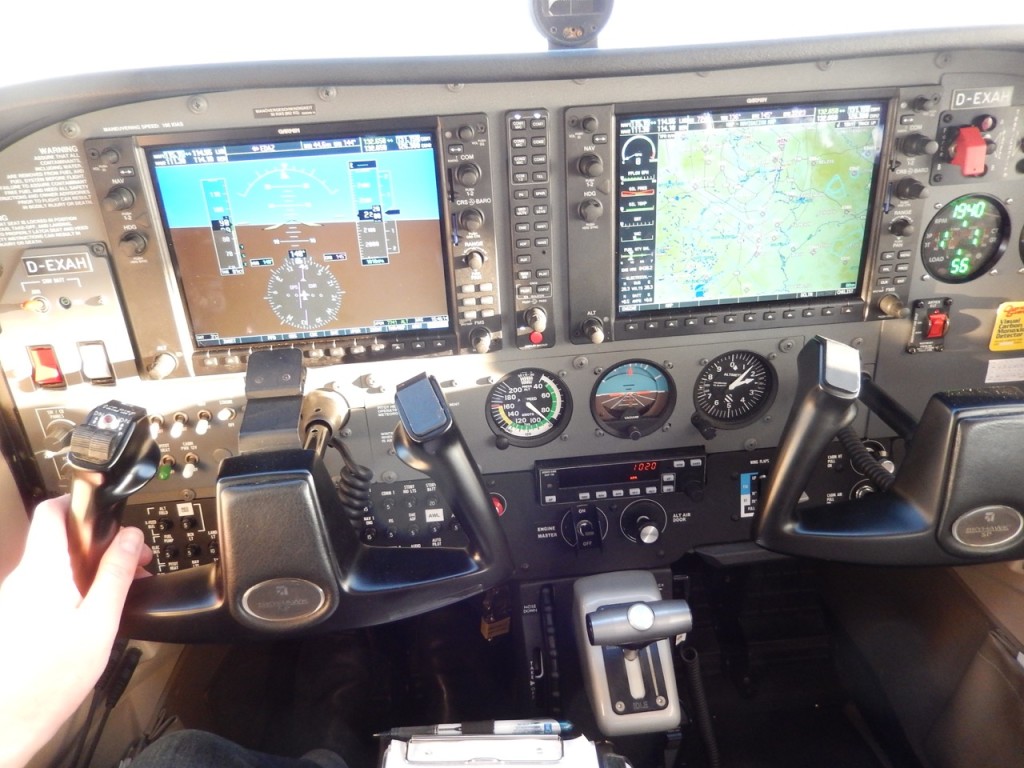
Easier makes it harder
A standart 172 has two leavers in the throttle quadrant – power and mixture. The Thielert engine has two redundant electronic control units (ECU) to manage the engine. So I only have one leaver for power. Everything else is adjusted automatically. What has been standard in cars for 30 years has finally arrived in general aviation!
The adjustable pitch propeller is also controlled automatically. The blades of the propeller are pitched according speed. This further improves fuel economy and speed.
After a very thorough briefing and explanation of the systems, we take-off. The majority of my flying as private pilot has happened on Cessnas. So I am a bit surprised when I have considerable troubles with the approach.
I am used to aircraft with fixed pitch propellers. On a stabilized approach, very little manipulation of the power is needed. Once the desired sink rate is established, the speed is mainly controlled with the pitch.
On short final with slow RPMs, the propeller of „Alpha Hotel“ pitches high in order to be effective for a possible go-arround. At the same time, this setting increases the resistance of the propeller in the air stream. It acts like a big air break on my nose, bleeding down the air speed fast!
I push the nose down and the instructor tells me to also increase the RPMs. The landing is pretty lousy. On the next couple of approaches I am more careful with the combination of pitch and power but I don’t ever feel fully in control of the situation.
We debrief the flight over a cup of coffee. I am a bit down about how many problems I had with an aircraft I thought I was comfortable with. A humbling experience.
We make a new appointment and this time I am more prepared for what to expect. I concentrate on the power/pitch settings on final approach. After an hour of pattern work I am still not happy with my landings but they are at least more or less under control. I’m keen on getting better with „Alpha Hotel“ and book her for a solo trip the same week. I do patterns for a while with okay landings but not much improvement.
Then I climb to 2.000 feet and turn north. I will take an advanced radio class at a flight school in Kyritz (EDBK) next week. Today I plan to fly there to pick-up the books. The flight is about 30 minutes. Enough time to start playing with the auto pilot and to dig deeper into the powerful G1000 suite. It will take a long time before I can make full use of it. But the basic functions are so intuitive that it is a joy to use the panel.
The approach into Kyritz is a bit hectic. There is a lot of traffic and I am number 2 behind an aircraft that simulates an engine failure. The runway is much smaller than the one in Schönhagen and I am a bit tense. And then it happens – a greaser of a landing, right on the numbers, perfect speed and so smooth that it makes this pilot smile. Looks like „Alpha Hotel“ and I will be friends after all.
To be continued…

